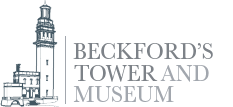FAQs
Below we have shared some of of the questions we receive most frequently about Beckford’s Tower. If you have a question which isn’t answered here, please email us at tower@bptrust.org.uk.
Q 1. Why does Bath Preservation Trust (BPT) run Beckford’s Tower?
Retired Doctors Leslie and Elizabeth Hilliard bought Beckford’s Tower from the Redundant Churches Commission in 1972 with private income. In 1977 they created the Beckford Tower Trust and gifted the Tower to that charity. BPT was later invited to become a ‘charity’ trustee to ensure the Tower would remain a charity forever. Beckford Tower Trust continues as a charity, run by BPT as the sole trustee.
Q 2. What happens to the money you make from Beckford’s Tower?
Beckford’s Tower Trust and BPT are both not-for-profit charities. Income generated by Beckford’s Tower meets the cost of running the museum and looking after the building and landscape. Any surplus remaining, and other funds from BPT, is invested in collaborative projects, co-curation and educational activities which actively engage underrepresented communities, and continue our work to “reclaim the space” of the Tower for all.
Q 3. Does the Museum discuss the fact that Beckford owned enslaved people?
Yes. Beckford’s Tower was built for William Beckford using profits from the transatlantic trafficking of enslaved Africans and the chattel slave trade. Beckford’s claiming in ownership the lives of enslaved people, is central to the story the museum tells. It is essential to confront – rather than mask – the source of Beckford’s wealth and the profound negative impacts it caused and the continued trauma experienced.
Q 4. What does Beckford’s Tower actually do to raise awareness of the transatlantic trafficking of enslaved Africans and the chattel slave trade?
We are exploring this through the interpretation at the museum, our public programme and an ongoing commitment to research the identities of the people who were enslaved by William Beckford and his family, losing freedom, family name and community.
We aim to do this in partnership. For example, projects such as ‘Cane Warriors’ the National Lottery Heritage Funded dance-theatre project with State of Trust. State of Trust is a registered charity set up in 2014 to address social need, provide education and support community cohesion through arts activity. “Cane Warriors” centres on the novel by award winning author Alex Wheatle based on the true story of Tacky’s Rebellion, an uprising of enslaved people that occurred in Jamaica in 1760 that included a Beckford owned plantation. It was the most significant slave rebellion in the Caribbean after the 1733 slave insurrection on St. John and before the 1791 Haitian Revolution. The project is run on a not-for-profit basis.
More activity and events are planned and opening the tower will allow us to collaboratively investigate the next steps and further work that needs to be done to continue raising awareness.
Q 5. Shouldn’t the Tower just be pulled down, like Colston’s statue?
Edward Colston’s statue was a commemorative, celebratory posthumous tribute to a man who caused irreparable and lasting harm, profiting from the transatlantic trafficking of enslaved Africans. Despite this history, the statue’s signage did not acknowledge Colston’s involvement in the transatlantic slave trade.
Beckford’s Tower was built for William Beckford to use during his life time. The rooms at the base of the Tower house a museum which confronts, rather than obscures, the reality of the harm that William Beckford and his family caused.
We consult extensively with our Community Advisory Panel, local communities and other stakeholders about the Tower, and they strongly feel the Tower and museum provides an opportunity to educate people about the transatlantic slave trade.
Q 6. Why don’t you just change the name to Lansdown Tower?
We have consulted extensively with our Community Advisory Panel, local communities and other stakeholders about the contents of the interpretation, and also the name of the Tower. The overwhelming response is currently to keep the name of the Tower and to confront, rather than mask, the truth of Beckford’s legacy.
Q 7. Why are you sensationalising or celebrating William Beckford?
William Beckford was an abusive and exploitative person, both in his business dealings and many of his personal relationships. We do not wish to sensationalise or celebrate this. The content of the Museum addresses this in a factual way, and with careful consideration of wording and sensitivity for visitors who may find the themes upsetting.
Q 8. What do you think about reparations?
Bath Preservation Trust supports the global call for restorative justice and reparations, to acknowledge and address the consequences of Britain’s historic involvement in the transatlantic slave trade, and engage with the communities that are still experiencing residual harm and trauma. We believe that independent institutions like ourselves have a responsibility to engage with restorative justice and we continue to explore additional appropriate responses, consulting with descendants of some of the people who were enslaved.
We feel that an open and transparent conversation and acknowledgement of the need for reparations and restorative justice should be led by the UK government as the ‘injuring party’.
Q 9. Are you going to make reparations for the transatlantic slave trade?
BPT is closely engaging with local Global Majority communities to accurately and fully describe the role of William Beckford in the transatlantic slave trade and the trauma, both historic and contemporary, his exploitation has caused. This includes exploring additional responses in collaboration with Prof. Robert Beckford and we will be open and inclusive in this approach.
Q 10. Why should descendants of enslaved people have to pay to visit Beckford’s Tower?
One of the aims of Bath Preservation Trust is to reclaim the space of the Tower and its landscape for all, giving everybody access to a space which was historically reserved for one very privileged man. In this FAQ we describe how we use visitor income to support collaborative projects and co-curation which actively engage the Ethnic Global Majority and other underrepresented communities.
We are keen to engage with people who are aware of ancestry linked to people the Beckford family held in enslavement, and encourage descendants to get in touch with us.
Q 11. William Beckford was a horrible man, why don’t you say this?
William Beckford was an abusive man both in terms of his personal relationships (including with William Courtenay) and in his ownership of enslaved people, and this will be an important part of the story the museum tells in its interpretation.
Q 12. Why don’t you call William Beckford what he was, a paedophile?
William Beckford had a sexual relationship with William Courtenay; they first met in 1779 when Courtenay was 11 and Beckford was 19, and their relationship was exposed in 1784. This was an abusive and exploitative relationship. Although we acknowledge the horrific nature of this relationship, we intentionally do not use the word paedophile in museum text where young visitors can read it without parental knowledge or oversight. We are aware of the triggering nature of language and have consulted with advisors over language use to ensure the museum is as safe a space as possible for all visitors.
Q 13. How are you telling the story of Beckford’s sexual child abuse of William Courtenay?
William Beckford’s abusive relationship with William Courtenay is directly addressed in the museum at Beckford’s Tower and in the accompanying guidebook and digital information. Trigger warnings are provided, and staff will be trained to provide additional support to visitors. Signposting for support is provided in the museum space that is not overlooked by staff, and which can be accessed by visitors with anonymity.
Powderham Castle was the home of William Courtenay and is open to the public. We are working with the owner of Powderham Castle to align our representation appropriately and openly.
Q 14. Does William Beckford have any living descendants?
There are currently no known direct living decedents of William Beckford.
Q 15. I have children – what can I expect from a visit?
We have used language carefully and sensitively to ensure people of all ages may visit, explore and experience the Tower. Age advisory notices are used, alongside learning materials and children’s trails will be written to be age appropriate.
Q 16. The museum deals with many unpleasant subjects, why should I visit?
Georgian Britain was a very different world to the one we live in today and we believe its many stories must be confronted honestly. Previous historians have edited out many of the truths about notable characters from history, including accounts of profit from the transatlantic slave trade and interpersonal abuse and sexual child abuse. In this museum we are editing those details back into the story, in the context of William Beckford’s life.
The museum itself houses many beautiful artworks, commissioned by Beckford and crafted by some of the period’s greatest artists; the Tower and its grounds are also magnificent and well worth viewing in person.
The museum also includes content from some of the Global Majority advisors who have worked with BPT to develop the project and which describes issues of continuing trauma, restorative justice and the need to reclaim colonialist spaces.
Our Museum Assistants are trained to support visitors, and trigger warnings are present before entering the museum. We recommend reading about William Beckford on our website prior to visiting, to give you an idea of what to expect from the on-site interpretation.
***
Did we answer your question above?
If you have any further questions or feedback we would welcome this, so please do email us at tower@bptrust.org.uk.

